Añade aquí tu texto de cabecera
Cusco has a great diversity of tourist attractions. From novel places like the Abode of the Gods to world-class historical sites like Machu Picchu. If you visit the land of the Incas you must do so well informed. Find out below the twenty best destinations on your trip to Cusco, their location, price and more.
Machu Picchu
Machu Picchu is world famous. It was ordered to be built by Emperor Pachacutec in approximately 1450. Its function was that of a citadel and religious center. It also served as a surveillance point in the eastern domains (jungle region) of the Inca Empire. There are three ways to get there: by train, on foot (Inca Trail 4 days) or with the alternative route through Hidroeléctrica. The train is the most used as it takes only 4 hours. It is visited by 1.5 million people a year. It is one of the 7 wonders of the modern world.
- Where is it? 110 kilometers by road and train from the city of Cusco.
- How much does it cost? 152 soles for foreigners and 64 soles for Peruvians.

Aguas Calientes
Aguas Calientes is a district of the province of Urubamba in the jungle of Cusco. It is also known as Machupicchu town due to its proximity to the Inca citadel (just 10 kilometers by road). Obviously hundreds of tourists pass through there every day. For this reason, the town lives off tourism thanks to its hotels, restaurants, cafes and other good quality tourist services. It also offers tourist attractions such as: its thermal baths, its waterfalls, its Machu Picchu site museum, its stone sculptures, the Putucusi mountain, its artisan market and more.
- Where is it? 100 kilometers by road and train from the city of Cusco.
- How much does it cost? Free visit.
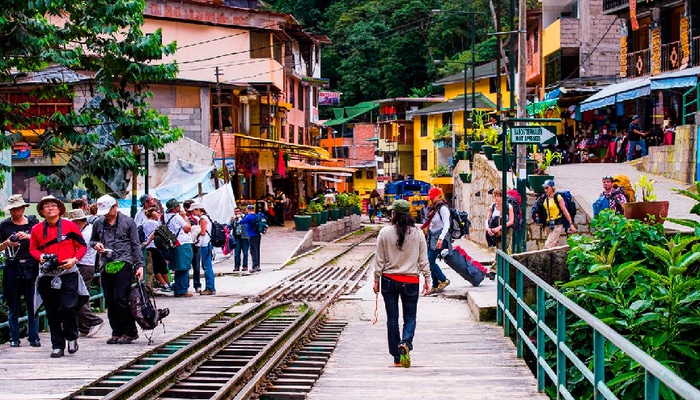
Choquequirao
Choquequirao is known as ‘The sacred sister of Machu Picchu’ because it has many similarities with Machupicchu. It has stone architecture as impressive (or more) than the Inca citadel. In addition, its mountainous geography, at the top of a mountain, is very similar to the Inca site. There are no roads to get there. You have to make an arduous 2-day walk (approximately 32 kilometers) from the town of Cachora (border of Cusco and Apurímac) to Choquequirao. If you arrive, you will be alone with this immense Inca citadel.
- Where is it? 2 days walk from the city of Cusco.
- How much does it cost? 60 soles for foreigners and 30 soles for university students.

Rainbow Mountain
The 7 Colors Mountain is one of the most visited tourist attractions in Cusco. It is also called hill of colors, rainbow mountain or simply Vinicunca. Its fame is due to its mountain slopes full of colors produced by the minerals of the place. This offers an incredible landscape that is worth knowing despite its location more than 5 thousand meters above sea level. To get there you have to make a final 5 kilometer walk that is feared by tourists from all over the world. The good thing is that there is always the option of hiring a horse (60 soles).
- Where is it? 100 kilometers by road from the city of Cusco.
- How much does it cost? 25 soles per foreign tourist and 15 soles per Peruvian tourist.
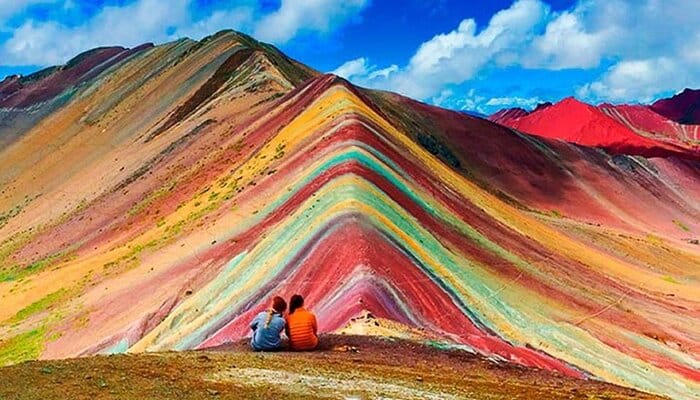
Humantay Lake
The Humantay lagoon is one of the most photographed tourist attractions in Cusco. This is due to its turquoise waters crowned by tall snow-capped mountains such as Humantay or Salkantay (the second highest in Cusco). The lagoon can be visited on a 1-day tour or as part of the famous 5-day Salkantay trek tour that includes Machu Picchu. In any case, a difficult walk of only 2 kilometers must be made, but it is complicated by being uphill and above 4 thousand meters above sea level. You dare?
- Where is it? 128 kilometers by road from the city of Cusco.
- How much does it cost? 10 soles per foreign tourist and 5 soles per Peruvian tourist.
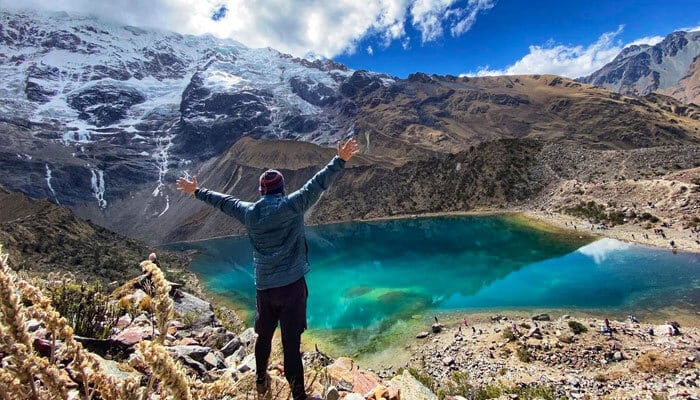
Waqrapukara
Waqrapukara, although not well known, is a historical tourist attraction that is worth visiting on the trip to Cusco. Its name means ‘horn-shaped fortress’. The reason? Indeed, this Inca site resembles a huge castle with two horn-shaped rock formations (although some residents say it is shaped like llama ears). It was a pre-Inca religious center but later conquered by the Tahuantinsuyo empire. To get there you must take an arduous walk of approximately 7 kilometers but surrounded by incredible mountain landscapes.
- Where is it? 116 kilometers by road and trail from the city of Cusco.
- How much does it cost? 10 soles per tourist in general.

Cocalmayo thermal baths
The thermal baths of Cocalmayo are recognized as the best in Cusco. This is due to its three clear water pools with temperatures of 40ºC. approximately and surrounded by mountainous landscapes typical of the Cusco jungle. They are located in the town of Santa Teresa, just 25 kilometers from Machu Picchu. To get there you must take a 5-hour road trip from Cusco. Another way is to do the famous Salkantay trek or the Inca Jungle (adventure tour that includes cycling, canoeing and zipline).
- Where is it? 207 kilometers by road from the city of Cusco.
- How much does it cost? 10 soles per foreign tourist and 5 soles per Peruvian tourist.

The abode of the gods
The Abode of the Gods (Apukunaq Tianan, in the Quechua language) is one of the most recent and famous tourist attractions in Cusco. It is located very close, just 12 kilometers from the city. Its fame is due to its enormous stone sculptures made by a Cusco artist. The sculptures have a conservation message with an Andean theme (cougars, three-dimensional doors and even Pachamama). You can go on your own or with a tour. It is also possible to do it on a quad bike.
- Where is it? 12 kilometers by road from the city of Cusco.
- How much does it cost? 5 soles per tourist in general.

Cusco Cathedral
The Cathedral of Cusco is the most historic and important colonial temple in Cusco. It was built during the viceroyalty, 1560 and 1664 (it took more than a hundred years). At first glance, its solid baroque structure made up of three different temples draws attention. However, inside there are treasures, liturgical pieces and works of art of great historical value. Highlights include the ‘Custody’, the canvas ‘The Last Supper’, the sculpture of the ‘Lord of Tremors’ and more. It can be visited on your own or with the Cusco City Tour.
- Where is it? In the Plaza de Armas of the city of Cusco.
- How much does it cost? 40 soles for adults in general.
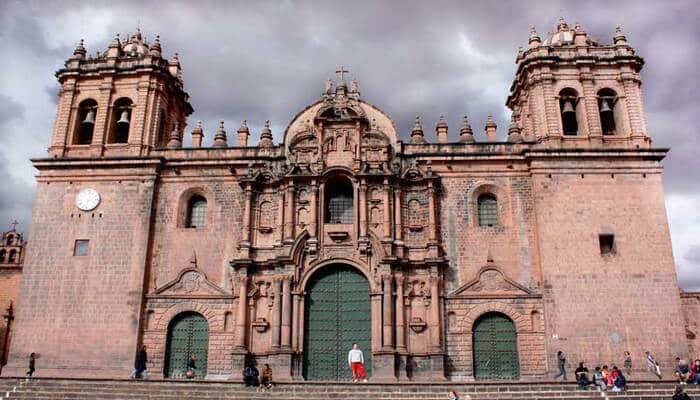
Sacsayhuaman
Sacsayhuaman is one of the most famous Inca constructions in Cusco. It was a worship center and used as a defense point during the wars between the Incas and the Spanish in the 16th century. Despite the damage from this battle, its immense constructions made of stones that weigh more than 120 tons are still visible. How did they move and carve such heavy stones? Sacsayhuaman can be visited on your own or with the Cusco City Tour. If you go on your own you must purchase the Tourist Ticket that also includes entry to Qenqo, Pucapucara and Tambomachay.
- Where is it? 4 kilometers by road from the city of Cusco.
- How much does it cost? 70 soles for foreigners and 40 soles for Peruvians (Cusco Tourist Ticket).
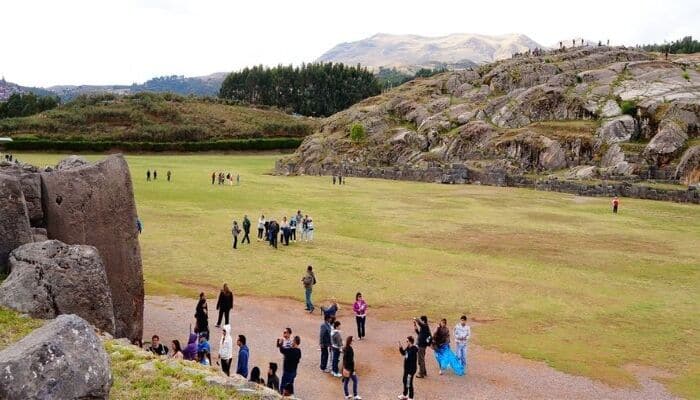
Coricancha
Coricancha was the most important religious temple in the Inca era. It is located in the historic center of Cusco, 600 meters from the Plaza de Armas. It has the finest and best carved walls in the entire empire. It was a shrine to the sun god (Inti) and all the Inca gods. Upon the arrival of the Spanish, its walls covered in gold sheets were looted, as were the shrines adorned with precious stones. Today it can be visited on your own or with the Cusco City Tour.
- Where is it? 600 meters walk from the Plaza de Armas of Cusco.
- How much does it cost? 15 soles for tourists in general.

Qenqo
Qenqo was an Inca temple located a short distance from the city center of Cusco (only 7 kilometers) and much closer to Sacsayhuaman (only 2 kilometers). It is famous for its amphitheater with a huge rock in the center where religious ceremonies were held. Also through its interior conduits in the form of a labyrinth where mummifications were carried out. Although small, it allows for an entertaining visit. It can be visited on your own or with the Cusco City Tour.
- Where is it? 7 kilometers by road from the city of Cusco.
- How much does it cost? 70 soles for foreigners and 40 soles for Peruvians (Cusco Tourist Ticket).

Pucapucara
Pucapucara is an Inca archaeological site located on the outskirts of the city of Cusco (10 kilometers). Its name means ‘Red Fortress’, perhaps because of its soil that acquires a reddish hue at sunset. It was an administrative center with simple stone structures on three levels. It is believed that the Inca’s guard rested there while he rested in Tambomachay, famous for its ceremonial baths. The visit can be done on your own or with the Cusco City Tour.
- Where is it? 10 kilometers by road from the city of Cusco.
- How much does it cost? 70 soles for foreigners and 40 soles for Peruvians (Cusco Tourist Ticket).
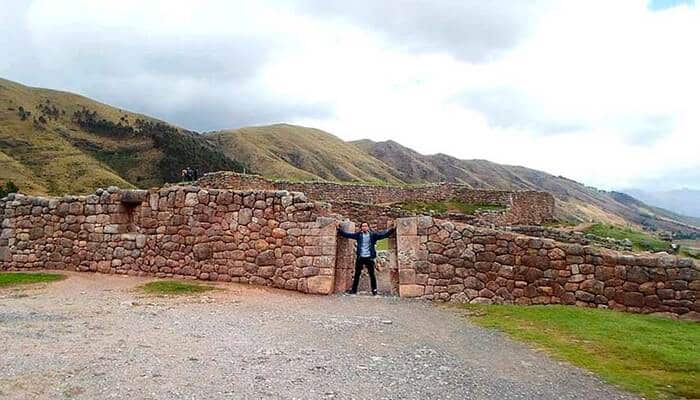
Tambomachay
Tambomachay is one of the most famous archaeological sites near the city of Cusco. It is located just 11 kilometers from the city center. It was a ceremonial center where water was worshiped as an element of purification. Its carved stone fountains still conduct water, just as they did in Inca times. Its fine stone structures can be visited with the Cusco City Tour or on your own by purchasing the Cusco Tourist Ticket (which also includes entry to Sacsayhuaman, Qenqo and Pucapucara).
- Where is it? 11 kilometers by road from the city of Cusco.
- How much does it cost? 70 soles for foreigners and 40 soles for Peruvians (Cusco Tourist Ticket).

Pisac
Pisac is one of the most visited archaeological sites in Cusco. It is located in the Sacred Valley of the Incas, an area famous for its beautiful landscapes and Inca buildings with a lot of history. Pisac stands out for its gigantic platforms, its temples, enclosures, roads and even its cemetery. It is so big that a one-hour visit is not enough to see everything. With luck you will be able to reach the Intihuatana, a ceremonial stone that received the sun’s rays. You can visit it on your own or with the famous tour to the Sacred Valley of the Incas.
- Where is it? 34 kilometers by road from the city of Cusco.
- How much does it cost? 70 soles for foreigners and 40 soles for Peruvians (Cusco Tourist Ticket).

Ollantaytambo
Ollantaytambo is one of the most visited Inca archaeological sites in Cusco. It is located in the area called Sacred Valley of the Incas along with other tourist attractions such as Pisac, Moray and Chinchero. It was a religious site where important temples were built such as the 10 Hornacinas Complex, the Ñusta Baths or the Temple of the Sun. The town of Ollantaytambo is the only one that has maintained its urban structure since Inca times. It can be visited on your own or with a tour. There is the main train station that leads to Machu Picchu.
- Where is it? 61 kilometers by road from the city of Cusco.
- How much does it cost? 70 soles for foreigners and 40 soles for Peruvians (Cusco Tourist Ticket).

Chinchero
The archaeological site and town of Chinchero, in the upper part of the Sacred Valley of the Incas, was a palace where Emperor Túpac Yupanqui resided. After the passage of the Spanish, its structures were destroyed and today the walls, platforms, roads and a colonial church with a lot of history stand out. The town of Chinchero is also famous for its textile centers where the traditional way in which clothing made from alpaca is created is appreciated. You can visit with a tour or on your own.
- Where is it? 30 kilometers by road from the city of Cusco.
- How much does it cost? 70 soles for foreigners and 40 soles for Peruvians (Cusco Tourist Ticket).

Tipón
Tipón is one of the least known archaeological sites in Cusco but it is worth knowing for its amazing Inca constructions. It was a temple of worship of water as a purifying element. It is located in the sector called South Valley of Cusco (along with Piquillacta and the Andahuylillas church). Its water sources stand out, which continue to carry this element after more than five hundred years. Tipón can be visited with a tour (half-day service to the South Valley of Cusco) or on your own.
- Where is it? 25 kilometers by road from the city of Cusco.
- How much does it cost? 70 soles for foreigners and 40 soles for Peruvians (Cusco Tourist Ticket).
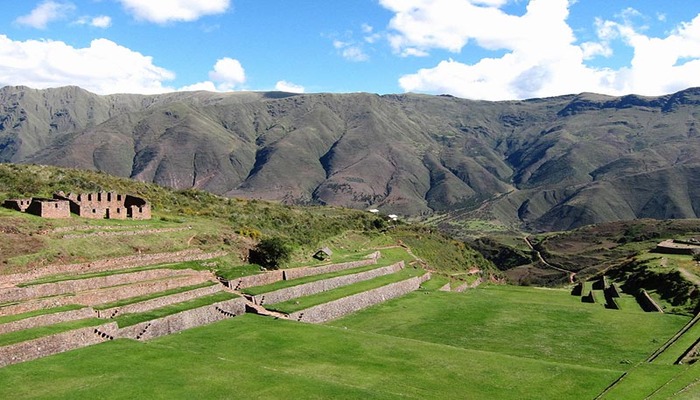
Piquillacta
Piquillacta was a citadel built by the Wari culture (600 AD – 1,200 AD) made of mud and stone that housed nearly ten thousand people. It is famous for its long streets and enclosures up to three stories high (a structure that differs greatly from Inca architecture). One of its main buildings is the Rumicolca, built by the Incas as an entrance to this enclosure. It is located in the South Valley of Cusco, whose tour also includes a visit to Tipón and the Andahuaylillas church.
- Where is it? 38 kilometers by road from the city of Cusco.
- How much does it cost? 70 soles for foreigners and 40 soles for Peruvians (Cusco Tourist Ticket).
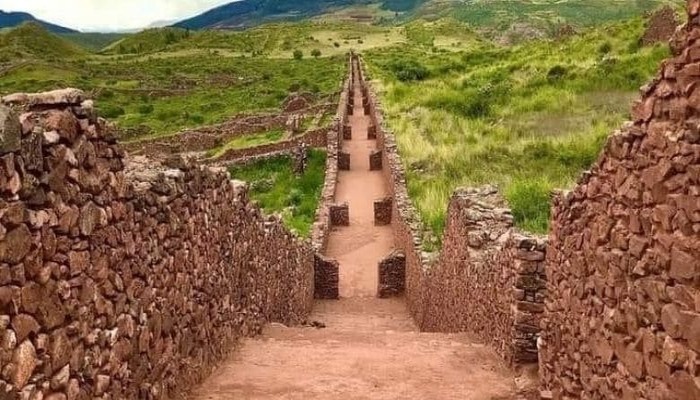
Raqchi
Raqchi was an immense Inca citadel located in the South Valley of Cusco. It owes its name to its proximity to the town of Raqchi, on the banks of the Vilcanota River. However, it is also called ‘The Temple of Wiracocha’, due to its main structure, a 20-meter-high mud and stone wall (the largest recorded in the Inca era). This wall was part of an immense structure that extended 25 meters in length. Although not very busy, more and more tourists are coming there. There is no tour to Raqchi so most visitors arrive on their own.
- Where is it? 119 kilometers by road from the city of Cusco.
- How much does it cost? 10 soles per tourist in general.

Te Sugerimos leer . . .

- Elemento de lista nº1

- Elemento de lista nº1

- Elemento de lista nº1

- Elemento de lista nº1

- Elemento de lista nº1

- Elemento de lista nº1
